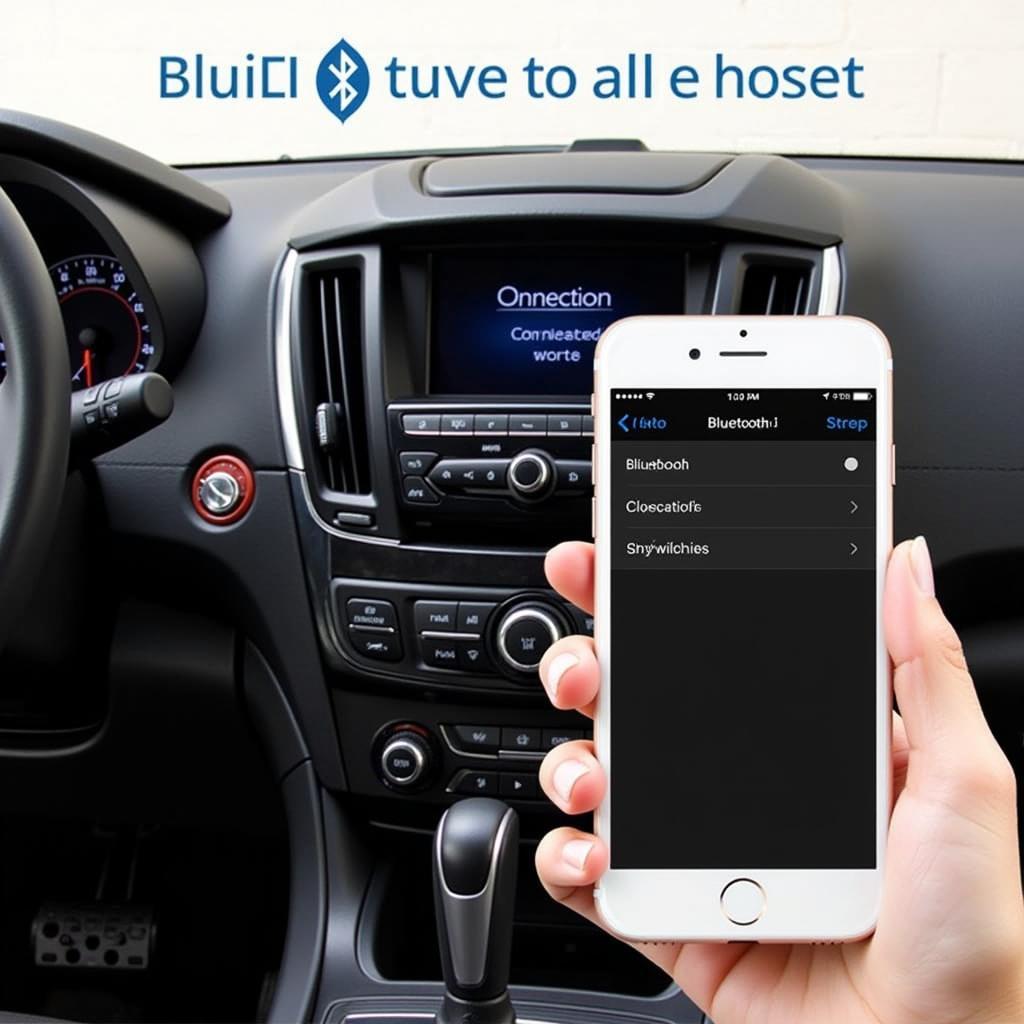The dreaded brake warning light on your 2000 Ford Explorer can be a source of anxiety. Understanding why this light illuminates and how to address the issue is crucial for your safety and the longevity of your vehicle. This comprehensive guide will delve into the common causes of a brake warning light on a 2000 Ford Explorer, offering troubleshooting steps and potential solutions, from simple checks to more complex repairs, including remote software solutions.
Common Causes of a Brake Warning Light on a 2000 Ford Explorer
Several factors can trigger the brake warning light on your 2000 Ford Explorer. Some are simple to fix, while others require professional attention. Here’s a breakdown of the most frequent culprits:
- Low Brake Fluid: This is often the most common and easiest issue to address. A leak in the brake system or worn brake pads can lead to low brake fluid levels.
- Worn Brake Pads: Brake pads have wear indicators that trigger the warning light when they reach a certain level of wear.
- Faulty Brake Light Switch: This switch activates your brake lights when you press the brake pedal. A malfunctioning switch can also trigger the brake warning light.
- ABS Issues: Problems with the Anti-lock Braking System (ABS), such as a faulty sensor or module, can illuminate the brake warning light.
- Parking Brake Engaged: Sometimes, the simplest explanation is the correct one. Make sure your parking brake is fully released.
- Master Cylinder Problems: The master cylinder is the heart of your braking system. A failing master cylinder can lead to a loss of braking power and trigger the warning light.
Troubleshooting Your 2000 Ford Explorer Brake Warning Light
Before rushing to a mechanic, there are some simple checks you can perform yourself:
- Check the Parking Brake: Ensure the parking brake is fully disengaged.
- Inspect Brake Fluid Level: Locate the brake fluid reservoir under the hood and check the fluid level. If it’s low, add brake fluid that meets the specifications for your 2000 Ford Explorer.
- Visually Inspect Brake Pads: If you’re comfortable doing so, check the thickness of your brake pads. If they appear thin, they likely need replacing.
When to Seek Professional Help for Your 2000 Ford Explorer Brake Warning Light
If the simple checks don’t resolve the issue, it’s time to consult a professional. A qualified technician can diagnose more complex problems, such as:
- ABS Diagnostics: Diagnosing ABS issues requires specialized equipment and expertise. A technician can pinpoint the problem and recommend the necessary repairs or replacements.
- Brake System Inspection: A thorough inspection of the entire brake system can identify leaks, worn components, and other potential problems.
- Master Cylinder Replacement: If the master cylinder is faulty, it needs to be replaced by a qualified mechanic.
- Remote Software Diagnostics and Programming: In some cases, issues with the brake warning light can be resolved through remote software diagnostics and programming. This involves using specialized software to access the vehicle’s computer system and identify and fix software glitches.
“Remote diagnostics and programming can be a time-saving and cost-effective solution for certain brake warning light issues,” says John Miller, Senior Automotive Diagnostic Technician at AutoTech Solutions. “It’s a non-invasive way to identify and resolve software-related problems, often without the need for extensive disassembly.”
2000 Ford Explorer Brake Warning Light: Remote Software Solutions
Advances in automotive technology have made remote software solutions a viable option for addressing certain brake-related issues in your 2000 Ford Explorer. This approach can be particularly useful for problems originating from software glitches or module communication errors.
- Addressing Software Glitches: Remote diagnostics can pinpoint specific software malfunctions within the braking system’s control modules. These glitches can sometimes trigger the brake warning light even when there’s no physical problem with the brakes.
- Module Communication Errors: Modern vehicles rely on communication between various modules. A disruption in this communication network can cause false alarms, including the illumination of the brake warning light. Remote software solutions can re-establish communication and resolve the issue.
- Updating Software Versions: Outdated software in your vehicle’s control modules can sometimes lead to compatibility issues and trigger warning lights. Remote programming allows technicians to update the software to the latest version, improving system functionality and resolving potential conflicts.
“While remote solutions are not a fix-all, they offer a valuable tool for diagnosing and resolving certain electronic issues that can trigger the brake warning light,” adds Susan Davis, Lead Software Engineer at Automotive Software Innovations. “This approach can save vehicle owners time and money, especially when dealing with intermittent problems that are difficult to diagnose through traditional methods.”
Conclusion
The brake warning light on your 2000 Ford Explorer should never be ignored. Addressing the issue promptly can prevent further damage and ensure your safety on the road. By understanding the common causes, following the troubleshooting steps, and seeking professional help when necessary, including exploring remote software solutions, you can effectively address the 2000 ford explorer brake warning light and keep your vehicle running smoothly and safely.

